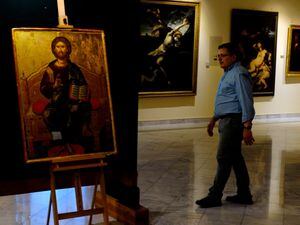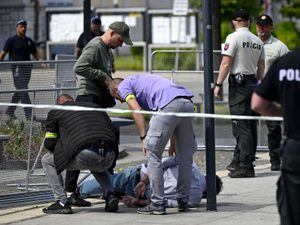500-year-old icon looted from church in Cyprus repatriated
It was one of countless religious artefacts stolen from churches that were abandoned when a 1974 Turkish invasion split the island.

A 500-year-old Orthodox icon that was looted from a church in the breakaway north of ethnically divided Cyprus has been returned to the island.
The icon of the Enthroned Christ, which Cyprus’s Antiquities Department dates to around the end of the 15th century to the early 16th century, was presented at a ceremony on Tuesday to the head of the island’s Orthodox Church, Archbishop Chrysostomos.
The icon belongs to the 12th-century Christ Antiphonitis Church, which is near the northern coastal town of Kyrenia.
It was one of countless icons, frescoes, mosaics and religious artefacts stolen from churches that were abandoned when a 1974 Turkish invasion split the island between primarily Orthodox Greek Cypriots in the south and Muslim Turkish Cypriots in the north.

Turkey’s invasion had followed a coup mounted by supporters of union with Greece.
“Efforts to repatriate stolen artefacts are continuing,” said transport minister Yiannis Karousos, who presented the icon to the church.
The Cyprus Church traced the icon to an auction in Switzerland, and Swiss police seized it in 2014.
Following a long legal process, Swiss authorities handed the icon over last week and it was flown to Cyprus.
The Cyprus Church has for decades been trying to track down numerous religious artefacts stolen from hundreds of abandoned churches and monasteries in the north and sold abroad.
The church said the returned icon would be held by the archbishopric “until it returns to its rightful place” in the Antiphonitis Church.





